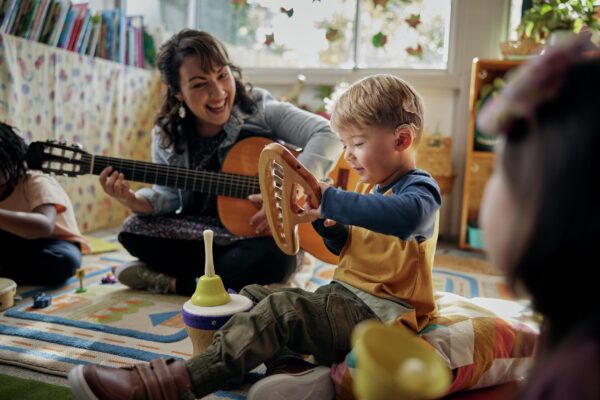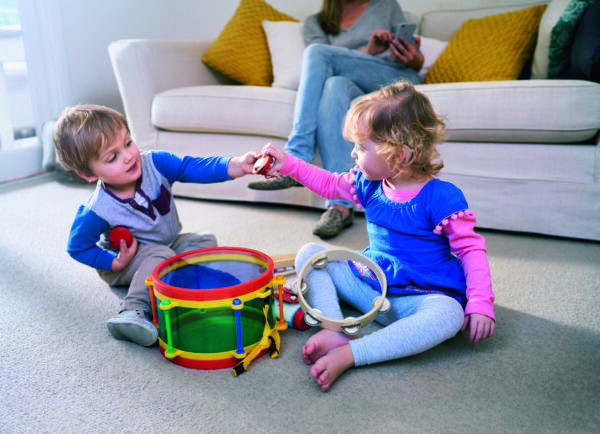Music can be an excellent way to help your child adjust to their cochlear implant. These tips can help make learning enjoyable and fun.
Did you know there’s a strong connection between musical activities and the development of speech and language skills in children with hearing loss or cochlear implants?1
Here are eight ways to incorporate musical activities into your child’s daily life to help boost their communication skills.
1. Start as soon as you can
Children can benefit from musical activities even before implantation of their cochlear implant – the earlier the better as the brain is most adaptable before age five.
2. Dance and use body movements in the rhythm of the music
Let body movements reflect the style of the music (fast or slow, happy or sad) to help your child learn the rhythm and beat of music, which are both important for speech perception.
3. Use your own singing as your main instrument
Singing face-to-face can help improve speech perception. Make sure your child can see your lips moving, which helps the brain connect the sound they hear to the lip and tongue movements. This can lead to better perception of speech in quiet or noise.
4. Use several musical instruments
Playing an instrument may be more effective than listening to music alone, so let your child try different (and any) musical instruments.
Parent tip 1
“We always had a box of percussion toys when my son was tiny. We bought small violins that weren’t too precious and recorders, triangles and xylophones.” – Jo, mother of Felix, who has a cochlear implant.
5. Sing and play the same songs repeatedly
Repetition helps your child remember sounds and what words should sound like. Over the course of the repetitions, the brain makes the sound more and more precise. Using the same song will help your child grasp the structure of the music.
6. Use songs that include turn-taking
Use songs that allow you and your child to take turns. Give your child the opportunity to continue the song when you stop singing or sing a short section of a song and have your child repeat it. This allows your child to listen, produce speech sounds, and compare your speech with their own.
7. Get the whole family involved
Involving everyone encourages music around your home, with plenty of repetition and opportunities to listen to and make music.
Parent tip 2
“I think musical activities have given my son the ability to tune in and focus his hearing in a fun and engaging way. He has learned to focus to hear a melody within a piece of music, or to hear lyrics in a song. I think the ability to identify all these different components and being able to isolate them has helped him with speech and language.” – Jo
8. Encourage life with music
Incorporate music into daily life but ensure background music is not making it difficult for your child to focus on your all-important voice.
Parent tip 3
“We made a specific point of listening to music while incorporating it into play. We danced together, or bashed pans together, or had music playing while relaxing on the floor.” – Jo
For hearing resources for all ages, visit click here.
- Torppa R, Huotilainen M. Why and how music can be used to rehabilitate and develop speech and language skills in hearing-impaired children. Hearing Research 2019; 380: 108–122.

